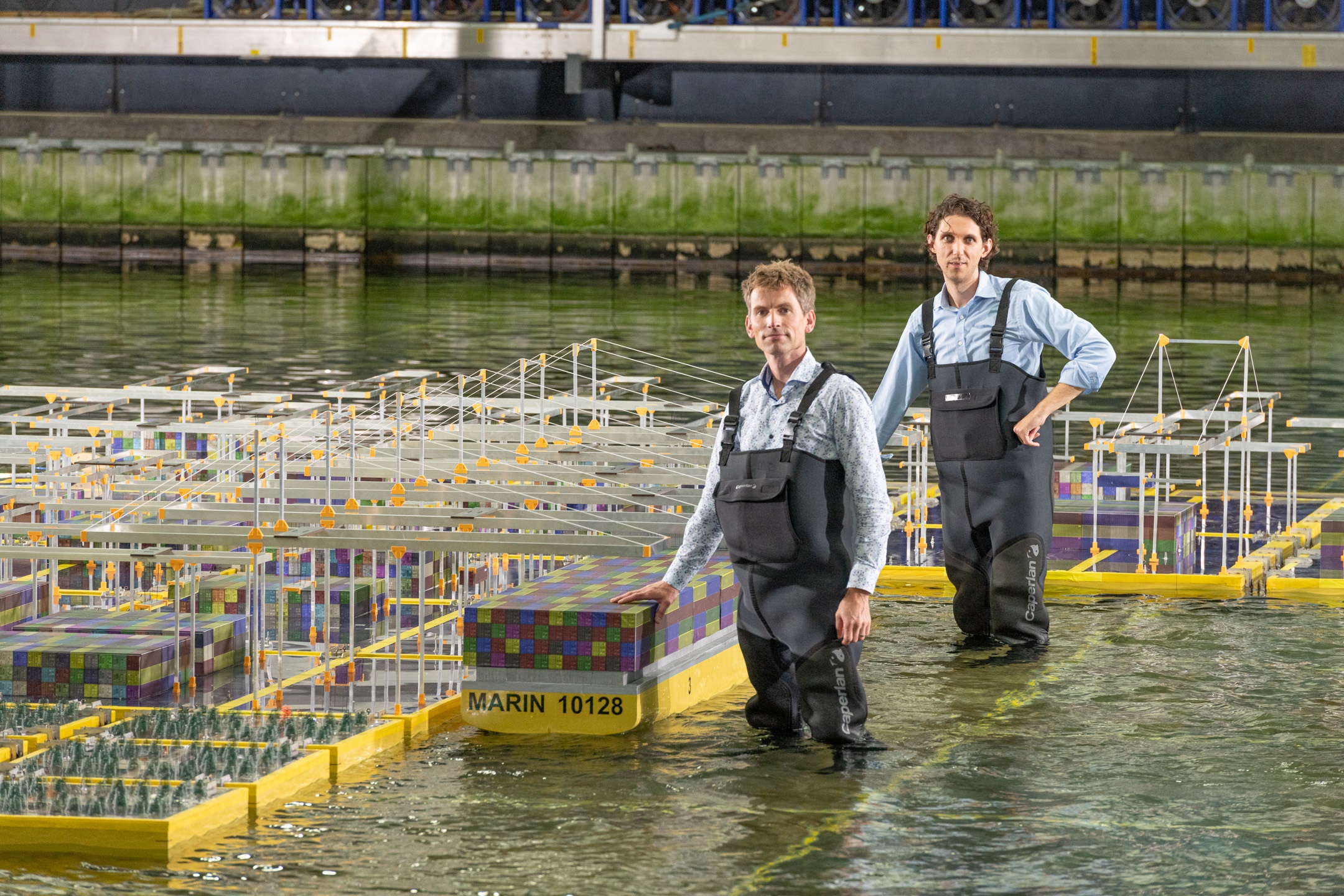
The Horizon 2020 funded Space@Sea project kicked-off in November 2017, setting out to make a step towards efficient use of the maritime environment. The consortium of 17 European partners developed sustainable and affordable workspaces at sea, consisting of standardised and cost efficient modular islands with low ecological impact.
Modular system
The consortium developed a system of coupled, interconnected, floating barges. As these barges have standardised dimensions and couplings, they can be combined into an infinite amount of different assemblies. This allows for a modular and flexible floating island, as the barges can be re-arranged such that the size and lay-out of the assembly can be adapted during its lifetime. This flexibility of floating islands is a key differentiator with respect to traditional land-based infrastructure, on which city maps or the maps of industrial areas are almost literally ‘set in stone’.
Integrated demonstrator
Four applications have been researched: Living@Sea, EnergyHub@Sea, Logistics@Sea and Farming@Sea. The projects demonstrator island (see picture) integrates all four of these activities on a floating island at open sea. This is a good impression of how the floating future might look like in the long term. However, it is most likely that the realisation of floating islands will start with one or two of these activities nearshore. For example, floating extensions of existing cities with sheltered waters. At a very small scale this is already realised in for instance IJburg, where a floating neighbourhood is extended to the city of Amsterdam. With the knowledge built within the Space@Sea project, we can step by step bring this technology further in the direction of large scale settlements at sea.
Wave induced motions
The hydrodynamic response of the demonstrator has been researched at MARIN. At the commencement of the project, there were no existing numerical tools to predict the wave induced motions of such large assemblies of interconnected pontoons. MARIN has therefore improved and extended the software packages DIFFRAC and aNySIM XMF in order to handle the large amount of bodies (>80). During the project, the improved codes have been continuously compared to model test results. Finally, the design of the demonstrator could be optimised for wave induced motions using the numerical tools. The U-shape lay-out provides a sheltered harbour for the container vessels to offload their goods. The demonstrator has been tested at a scale of 1:60 in MARIN’s Offshore Basin. The island could resist waves up to 6m significant height.
Multi-disciplinary project
One of the strengths of the Space@Sea project is the diversity of its consortium including architects, urban planners, logistical experts, biologists and hydrodynamic experts. There is also a diversity in type of organisation, as the experts come from commercial firms, applied research institutes and universities. Within the first phase of the project it was key to learn to understand each other’s ‘language’, as each expert sees and communicates things from their own perspective. Although this is a lengthy process, it is worth the investment. The diversity of the group minimises the risk of certain aspects being overlooked. Also, learning from each other has proven to be great fun and broadened the perspective of each participant.
Acknowledgement
Space@Sea is funded by the EU Horizon 2020 research program under project number 774253. Partners working together are Deltasync, DST, Nemos, TU Delft, Mocean Offshore, TU Hamburg Harburg, Bluewater Energy Services, Univeristy of Rostock, Gicon-Grossmann, Wageningen University, University Duisburg-Essen, TU Graz, Waterstudio, Icepronav, Val Fou, DEME and MARIN (project coordinator).
More information at www.marin.nl/jips/space-sea.